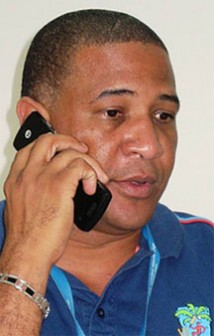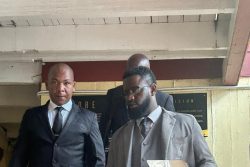Simon Doull’s take on Chris Gayle’s eventual return to the West Indies team is, no doubt, widely, if not unanimously, shared throughout the Caribbean. What makes it more pertinent is that it came from someone unaware of all the convoluted reasons for his prolonged exile and completely detached from the divisiveness it caused in these parts.
Doull, the former New Zealand swing bowler, said on television commentary during Thursday’s first ODI that, for all Gayle’s spectacular hitting that have made him the darling of franchise owners and fans and a unforgiving ogre to bowlers in globally spread Twenty20 leagues, his true place was in international cricket for the West Indies.
It was a travesty that, as he continued to smash bowlers of all types and nationalities in distant parts of the globe, he could only be seen by his home public on television, until the settlement between himself and the West Indies Cricket Board (WICB), brokered at prime ministerial level last April, that cleared the lifting of his disqualification.
For all the additional fame and fortune he has earned from his several Twenty20 contracts, Gayle would not be Jamaican if he was not frustrated by the standoff with th
e WICB that kept him from appearing on his home patch in West Indies colours.
 A headstrong individual not inclined to apologise for things he felt needed to be said, such as his radio criticism of coach Ottis Gibson, chief executive Ernest Hilaire and the board in general that brought his suspension, Gayle brought himself to sign the agreement that opened the way for his return.
A headstrong individual not inclined to apologise for things he felt needed to be said, such as his radio criticism of coach Ottis Gibson, chief executive Ernest Hilaire and the board in general that brought his suspension, Gayle brought himself to sign the agreement that opened the way for his return.
In it, he “expressed his regret for making an earlier contentious statement which could have been interpreted, and was so interpreted in several responsible circles as bringing the board and management of West Indies cricket in disrepute.”
The impact of his reinstatement was reflected over the first two ODIs in the current series against New Zealand in the biggest crowds to have poured into Sabina Park for many years; it was articulated by one female spectator in an interview on television as Gayle proceeded to his confidently anticipated, almost inevitable, hundred during yesterday’s second ODI.
She was there, she said, purely because Gayle was there. “He brings excitement to the cricket” might have been a redundant comment but, as with his friend and countryman Usain Bolt and any other exceptional sportsman, he also brings people – male, female, young, old – through the gates.
The scenario is likely to be the same in the remaining ODIs in St. Kitts and the Tests in Antigua and back at Sabina early next month.
In his absence, the West Indies have had to turn to young, inexperienced batsmen at the top of the order. Talented as they might be, Adrian Barath, Kieron Powell and Kraigg Brathwaite missed the accompaniment of a seasoned campaigner such as Gayle whose daunting approach to batting would have eased the pressure placed on them by strong fast attacks such as Australia’s and England’s.
Gayle has immediately reasserted that he is not merely a Twenty20 ball beater. Yesterday was his third ODI back, his 20th hundred taking him past Brian Lara’s 19 as the most by a West Indies batsman.
His two previous innings were 53 against England at the Oval in June (when out to a dubious, reviewed lbw decision) and 63 not out at Sabina on Thursday when the rain checked his aim of marking his return to Sabina with three figures.
The two Tests that follow the ODIs here will be a test of his fitness over five days as much as anything. He will be 33 on September 21 and his leg muscles have increasingly let him down in the past couple of years.


He remains the fiercest, cleanest striker of a ball in world cricket. Few have ever hit it harder or further, whatever the format. In his 91 Tests, he has clouted 75 sixes. Yet there can be little doubt that he is more than purely a ball beater; he has repeatedly, and recently, proved his ability to build big, long innings.
His 333 against Sri Lanka in Colombo that occupied 10 minutes short of 11 hours was just 18 months ago. He batted through the innings for just over seven hours for his unbeaten 165 against Australia in Adelaide in 2009.
C. H. Gayle as the first name in a West Indies scoresheet adds appreciably to its present strength.
There is, of course, another side to the story. It concerns his relationship with the WICB and with coach Gibson, whose censure of “senior players” following the 2011 World Cup stirred Gayle’s anger in the first place.
Gayle has proclaimed his commitment to West Indies cricket and to playing in all three versions of the game.
Certainly his triumphant homecoming must be an immediate incentive. His attitude on the field, not least his urgency in running between the wickets, never a priority, indicates an individual free of any residual hang-ups from his latest disagreement with a board with whom, he once said, there was no love lost. Long may it last.




